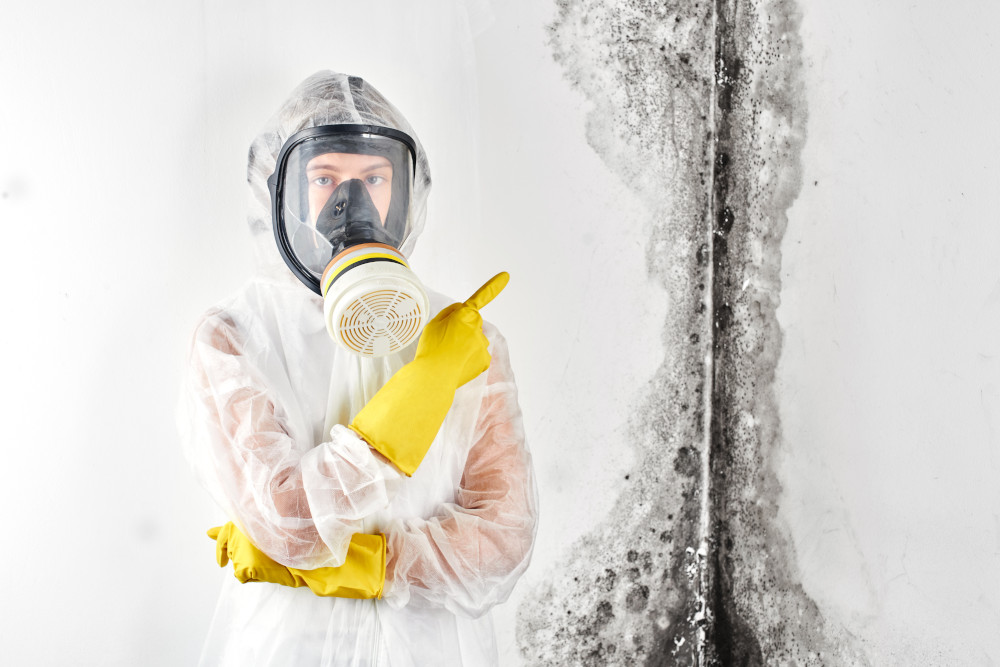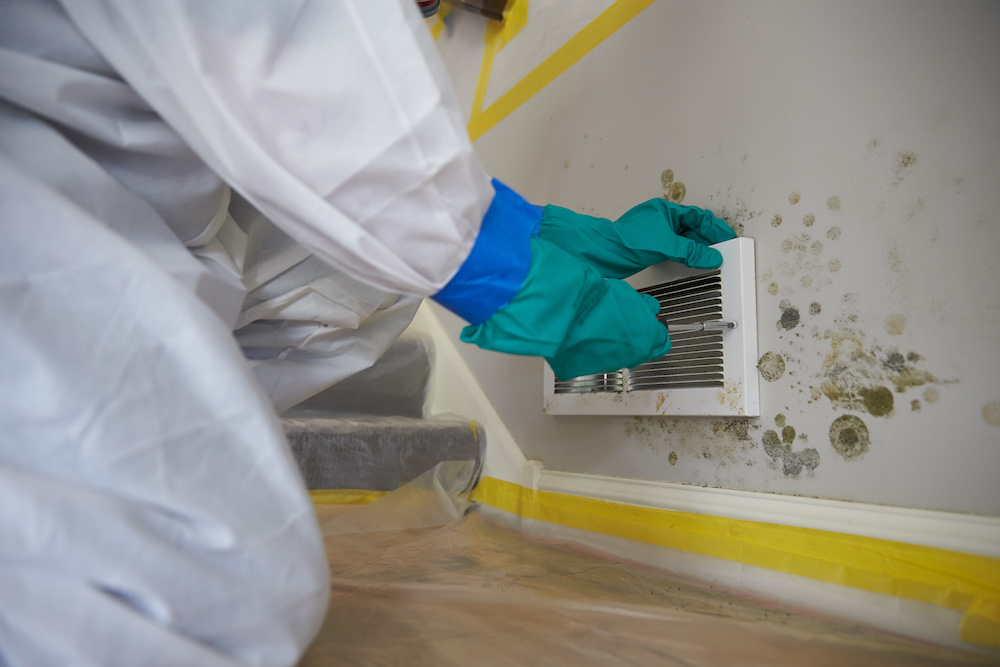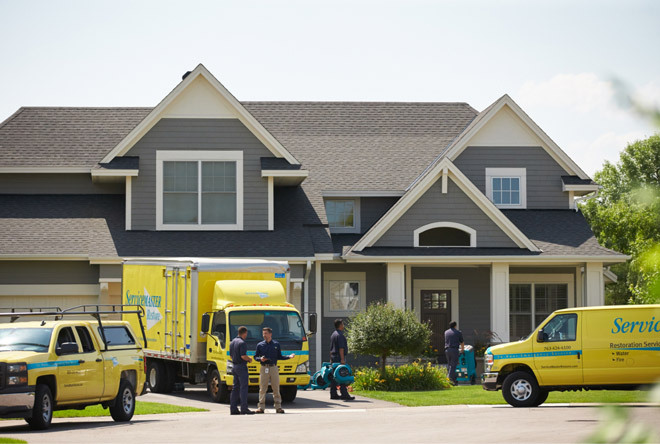Mold Removal & Remediation in Chicago
Emergency Mold Remediation NEar You
Mold is one of the worst contaminants you can find in your home. Though not always visible or easy to spot, it can silently wreak havoc on your property.
Mold can grow anywhere indoors where there are wet or damp surfaces, including on ceilings, wallpaper, wood, drywall, and insulation material. It can begin growing on a wet surface within 48 hours. And if mold is left unchecked, it can impede your quality of life and put the structure of your home at risk.
Need mold removal services in Chicago? Count on our expert and courteous team. Call us at (773) 729-1757 to request your service.
Protect Your Home & Health From Mold

There is no denying that mold is unattractive. Unfortunately, that’s only the start of the problem. In addition to being harmful to the walls, ceilings, and floors of your home, it can also pose a risk to the health of you, your family, and anyone else in your home.
It’s important to call our mold remediation company in Chicago at the first sign of a problem to avoid serious damage to your home and health.
Mold infestation can lead to:
- Structural damage to foundations, HVAC systems, drywall, roofing, gutters, furnishings, and other areas
- Health problems that include headaches, skin irritation, allergic reactions, breathing difficulties, aggravation of asthma symptoms, and more
Our mold removal staff members are Indoor Air Quality Association (IAQA) Certified Mold Remediation experts. This means that the ServiceMaster DSI team has received extensive training in microbiological contaminants and removal techniques.
Paired with our decades of mold removal service for homes and businesses, you won’t find a more thorough and efficient mold removal team.
Dial (773) 729-1757 or contact us online to learn more about mold removal services near you!
Our Mold Remediation Process
- Isolating and containing mold with physical barriers or other techniques
- Using the latest technology to capture, filter, and scrub mold spores from the air
- Removing mold itself with EPA registered anti-fungal and antimicrobial products
- Drying sources of water contributing to mold growth
- Disposing of mold-contaminated material
- Cleaning and deodorizing belongings as necessary
- Repairing and reconstructing damaged areas of your home
Whether the Chicago humidity has affected your home, you've experienced flood damage, or you have had leaky plumbing in the past, you may have mold hidden somewhere in your home. The best action you can take is to immediately call a professional Chicago mold remediation specialist.
We’ll get your home is back in its original state by providing mold remediation and any other water damage or restoration services needed if we find your structure is at risk.
How To Get Rid Of Mold Spores In The Air

Getting rid of mold spores in the air can be challenging, but here are some steps you can take to help reduce the amount of mold spores in your indoor air:
- Identify and remove the source of mold: The first step in reducing mold spores in the air is to identify and remediate the source of mold growth. This may involve fixing leaks or ventilation issues, removing water-damaged materials, and thoroughly cleaning and disinfecting affected surfaces.
- Improve ventilation: Increasing ventilation in your home can help reduce the concentration of mold spores in the air. This can be done by opening windows, using exhaust fans in bathrooms and kitchens, and running a dehumidifier to reduce indoor humidity levels.
- Use an air purifier: An air purifier with a HEPA filter can help remove mold spores from the air. HEPA filters are designed to capture small particles such as mold spores, dust, and pollen.
- Clean and vacuum regularly: Regular cleaning and vacuuming can help remove mold spores and prevent them from accumulating in your indoor air. Use a vacuum with a HEPA filter to help trap mold spores and prevent them from being released back into the air.
- Monitor indoor humidity levels: Mold thrives in high humidity environments, so it's important to monitor indoor humidity levels and keep them below 60%. You can use a hygrometer to measure indoor humidity levels and a dehumidifier to reduce humidity if needed.
It's important to note that while these steps can help reduce the concentration of mold spores in the air, complete elimination of mold spores from indoor air is not always possible. If you have a mold allergy or are experiencing symptoms related to mold exposure, you should consult with a medical professional for advice on managing your symptoms.
What is the Difference Between Mold Removal and Mold Remediation?
The terms "mold removal" and "mold remediation" are often used interchangeably, but there's a crucial difference. Mold removal simply eliminates surface mold, which might be sufficient for small areas on non-porous surfaces. Mold remediation, however, goes much deeper. It tackles the root cause – identifying and eliminating the moisture source that allowed mold to grow. This comprehensive approach also addresses hidden mold within building materials and ensures safety by reducing airborne mold spores to normal levels.
At ServiceMaster DSI, our certified mold specialists can assess your situation and recommend the most effective plan, whether it's targeted mold removal or a comprehensive remediation process. Don't wait – contact us today for a mold inspection and breathe easy in a healthy, mold-free home!
Why Hire ServiceMaster DSI for Chicago Mold Removal?
With over 15 years in the residential restoration sector, the Executive Management Team at ServiceMaster DSI is skilled in striking a balance between fast result and high quality work. Getting houses and businesses back in full operation as soon as possible, is our top priority. In turn, this lowers interruption costs and client downtime, creating exceptional customer satisfaction. Additionally, the vertical integration of our service offerings improves effectiveness and quality throughout the full restoration process.
We have a strong desire to provide exceptional brand quality, value, and service because our greatest asset is our workforce. The ability to find, develop, and keep the greatest restoration specialists in the industry is something ServiceMaster DSI is proud of.
Give us a call at (773) 729-1757 or contact us online to consult with a mold specialist near you today!


